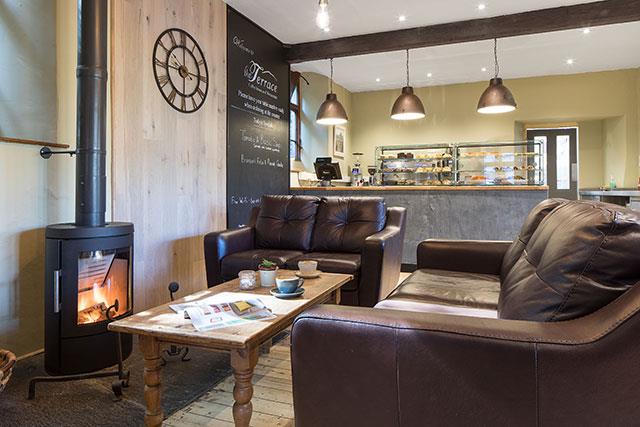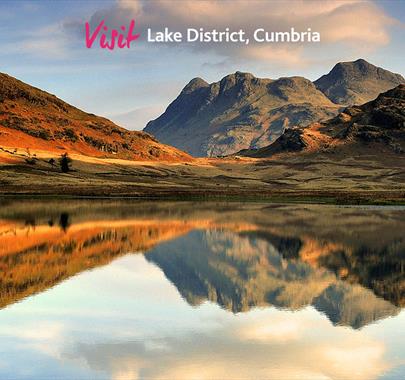- Accommodation
- What's On
- Things to Do
- Food and Drink
- Explore Cumbria
- Areas of Cumbria
- Towns & Villages
- Lakes of the Lake District
- Travel
- Year of the Coast
- Dark Sky Cumbria
- World Heritage Cumbria
- Access for all - Adventure for Everyone
- Historic Houses, Parks & Gardens
- Mountains and Fells
- Wainwrights
- The National Trust in the Lake District
- Cumbrian Castles
- Cumbrian Churches
- Harbours & Marinas
- Tourist Information Centres
- Ideas and Inspiration
- Starring Great Britain: The Lake District, Cumbria
- Lake District, Cumbria Bucket List
- Selfie Guide
- Suggested Itineraries
- Sunny day ideas
- Rainy day ideas
- Spa Breaks
- Romantic Breaks
- Family Holidays
- Dog Friendly Holidays
- Bespoke Holidays
- The Inn Collection Group in the Lake District
- Sustainable Stays
- Caring for the environment
- Live, Work and Study in The Lake District, Cumbria
- Weddings
- Conferences & Event Spaces
- Prizes & Guides
- Blog
- Plan your journey
- Special Offers
You are here: Home > Explore Cumbria > Coniston
Coniston village is especially popular with walkers and outdoor enthusiasts primarily because of its position – at the foot of one of Cumbria’s most popular fells, the Old Man of Coniston and by the western shore of Coniston Water, at 5 miles (8km) long one of England’s largest lakes. A relic fish from the Ice Age, the Arctic Char, still inhabits these waters.
Born on the back of the copper mining and slate quarrying industries, the village today has a thriving economy based on walking, sightseeing, water sports, mountaineering, horse riding and the consumption of real ale!
North of Coniston, two spur roads lead to Tilberthwaite and the old slate quarries, now carved into a distinctive landscape of huge spoil heaps and gaping rock chasms.
Food & Drink in Coniston
Coniston is spoilt for choice with many of its cafes and restaurants having beautiful lake vistas, or are even sited by Lake Coniston itself. How about sitting on a cosy sofa in a Farmhouse tearoom overlooking the lake, or take your coffee, or perhaps something more substantial, on a café terrace, with unrivalled views across the Lake.
 Many of the pubs, restaurants and cafes have intimate settings, which are warm and cosy and offer a variety of locally sourced, award-winning foods. There’s everything from Indian food, making a very good choice for vegetarians, to a marvellous selection of traditional pubs with roaring log fires, a warm and friendly service, either in the town itself or in nearby Torver.
Many of the pubs, restaurants and cafes have intimate settings, which are warm and cosy and offer a variety of locally sourced, award-winning foods. There’s everything from Indian food, making a very good choice for vegetarians, to a marvellous selection of traditional pubs with roaring log fires, a warm and friendly service, either in the town itself or in nearby Torver.
The selection of beers are second-to-none, with Coniston having its own local brewery, there is much to try from the Bluebird Bitter to Coniston Old Man Ale.
Portions are often generous without skimping on quality with many eateries being dog-friendly. There’s classy Bistros with beautifully presented inventive cuisine and several of the eating establishments in Coniston aren’t licenced, so you need to BYOB. What better way to enjoy first class food at affordable prices.
Whatever the weather, couples and families will always find somewhere to relax and unwind and enjoy the very best of Cumbrian cuisine and hospitality.
Coniston - Culture & Heritage
This area’s history is defined by sheep, copper and slate. In the 16th century, rich seams of copper ore were found in Coppermines Valley. With little local mining expertise, German miners were drafted in to work the copper veins. Peak output for the mines was the middle of the 19th century, when most of the copper was used to line the hulls of wooden sailing vessels.
Falling copper prices and greater competition from overseas resulted in a gradual decline and the closure of the mines in 1915 – but the legacy is still visible in the abandoned shafts and open workings that are still pretty dangerous to wander into.
Much of this area was formerly monastic land owned by Furness Abbey which made its money from sheep farming, and iron ore mining and smelting. One of their estates was at Monk Coniston, now owned by the National Trust.
They bred the local Herdwick sheep – from the old Norse for ‘sheep farm’ – whose distinctive grey fleeces and short, sturdy legs were particularly suited to the rigours of living on the open fells. Many Lakeland hill farms continue to farm this old breed.
Slate quarrying developed during the 17th century in response to increased demand for building materials, particularly roofing slates. The quarries at Tilberthwaite and on the ‘Old Man' were mined systematically for around 200 years and one or two are still in operation today.
Quarrying and mining were so profitable that in 1859 a railway was built to bring out the copper and slate. In later years, the railway brought the first tourists to the area, but was subsequently closed in 1964.
Clearly such heavy industry did little to spoil the area’s natural beauty as early tourists still came to marvel at the region’s natural beaty. The influential 19th century writer and social reformer John Ruskin was so enchanted by the landscape that he once declared his house on the eastern shore of Coniston Water – a nice pile called Brantwood – to have ‘the best view in all of England.’
Did you know?
JOHN RUSKIN
John Ruskin (1819-1900), one of the most influential critics, thinkers and social reformers of his day, who inspired Tolstoy, Proust, Shaw, Oscar Wilde, the first Labour MPs, and Gandhi, amongst others. Revolted by industrialisation and rampant capitalism, he revived the local linen industry, the museum houses the finest collection of Ruskin Lace in the world.
DONALD CAMPBELL (1921–1967)
Coniston Water was the scene of an ill-fated attempt by Donald Campbell to break the water speed record. On 4 January 1967, Donald was at the helm of Bluebird K7 and travelling at around 320 mph when the boat somersaulted into the air and disappeared into the water. It was not until 2001 that the remains of Bluebird were raised from the lake bed, and has subsequently been restored and brought back to Coniston, where it can be seen in the specially built ‘Bluebird Wing’ of the Coniston Museum.
SIMON’S NICK
Simon’s Nick, ‘a fearsome crack in the rocks below Levers Water’, was where a seam of copper was worked by a miner called Simon Puchberger. He was blown up by his own explosives. His ghost is said to haunt the mine to protect what remains of the copper ore.
HALIFAX BOMBER
In October 1944 a Halifax Bomber crashed into Great Carrs, a steep mountain side behind Wetherlam. All on board were killed. One of the engines can be seen outside the Ruskin Museum.
OLD MAN OF CONISTON
'The ‘Old Man of Coniston' (SD 272 978) rising dramatically behind Coniston is one of the highest mountains in Cumbria at 803 metres. The ‘man' is the large cairn on the summit.
GERMANIC SURNAMES
The influx of German miners in the 16th century has left a legacy of Germanic surnames and patronyms among Coniston’s residents today, such as the Calkers, Knipes and Zinagles (now Senogles).
Highlights
Most of the low fells east of Coniston Water are covered by woodland and forestry plantations. The…
The Lake District Swim Yoga Retreat. We love swimming, but we also love yoga and between the two…
Subberthwaite Common and the Blawith Fells lie at the southwest tip of Coniston Water. Most people…
The Yewdale Inn is a traditional British pub located in the picturesque village of Coniston. Enjoy…
At 5 miles long, Coniston Water is the third largest of the lakes. Arthur Ransome based his…
• 5 Star Gold Rated Barn Conversion for 2 • Idyllic riverside location • Secluded gardens • Views…
If you want to try camping but don’t have the equipment or just don’t fancy putting up a tent then…
Backed by low fells and woodland, the western shore of Coniston Water is a delightful place for a…
Breath-taking mountain views, a private hot tub, wrap-around gardens and a tranquil location on the…
Generally you expect to find long rolling descents on mountain bike routes in the higher peaks and…
Scrambling is an outdoor adventure experience that sits half way between hill walking and rock…
A 3-hour session with a foraging expert, including ID work, tasting wild ingredients and a wild…
Nestled in the scenic English Lake District, The Crown Inn in Coniston offers a charming retreat at…
Set in the south-west of the region the Duddon Valley is remote, unspoilt and one of the most…
Coniston used to have its own railway line with a terminus station in the village just up from the…
Buses to and through Coniston: Coniston Rambler 505 Ambleside - Hawkshead - Coniston. X12…
Tarn Hows is a stunning local beauty spot, artificially made in the 19th Century by joining 3 tarns…
Yewdale, Arnside Intake, Tarn Hows and Monk Coniston make up an intricate network of small valleys…
Located on the shores of Coniston Water with sensational lake and fell views, this classic Lakeland…
Set in a quiet corner of Western Cumbria, and with panoramic views over Duddon Sands, South…
Spoon Hall Caravans is a quiet family run farm site with beautiful views over Coniston water.…
• Sleeps 4 • Mountain hot tub with incredible views of Coniston Old Man • 2 bedrooms and 2…
Thornthwaite Farm is set amidst the beautiful scenery of the Woodland Valley. We have four…
An exceptional, luxurious 5 bedroom lake house with beautiful and stylish interior, private lake…

- 1Grizedale Forest and Parkamoor
- 2Lake District Swim Yoga Retreat
- 3Subberthwaite Common
- 4The Yewdale Inn
- 5Coniston Water
- 6Mill Pool Barn, Torver, Coniston
- 7Coniston Park Coppice Site - Camping Pods
- 8Western Shore of Coniston Water
- 9Hollace
- 10Tour of Tilberthwaite and Tarn Hows
- 11Scrambling near Coniston with More Than Mountains
- 12Forage and Nibble near Windermere
- 13The Crown Inn, Coniston
- 14Duddon Valley
- 15Tour of Coniston Water & the Torver Trail
- 16Buses to and through Coniston
- 17Tarn Hows
- 18Yewdale and Tarn Hows
- 19The Coniston Inn - Food & Drink
- 20Longlands Holiday Park
- 21Spoon Hall Caravans
- 22Slater Bob's, Coppermines Valley, Coniston
- 23Thornthwaite Farm Holiday Cottages & Glamping Cabins
- 24Tanglewood

The Lake District Where modern tourism was born
- Accommodation
- Things to Do
- What's On
- Food & Drink
-
Towns & Villages
Number of results: 105
, currently showing 101 to 105.
Address
Grizedale Forest Visitor Centre, Grizedale, Ambleside, Cumbria, LA22 0QJTelephone
0300 067 4495Ambleside
Breath-taking views, stunning artwork and forest trails, come and discover all that Grizedale has to offer! Wood Moss Tarn route is about 5.5 miles or just under 9km long, heading south from the visitor centre and passing the Wood Moss Tarn, before…
CONISTON
The Bluebird Car & Coach Park is under development, opening date TBC
Address
CONISTON, Cumbria, LA21 8DGCONISTON
Free parking area with space for around 25. There is a donation box for the Lake District National Park Authority located at the car park.
Tilberthwaite Ghyll car park is a large layby close to Tilberthwaite Farm. The parking area is accessed via a…
Address
Grizedale, Cumbria, LA22 0QQGrizedale
Car park with 15 spaces. From Grizedale Visitor Centre head south on the minor road to Satterthwaite. First turning on the left about 1 mile south of the Visitor Centre.
Address
Grizedale, AMBLESIDE, Cumbria, LA22 0QJTelephone
0300 067 4495AMBLESIDE
A Pay on Exit system operates in the main car park.
You may also like
Receive all the latest news, special offers and information from the Lake District, Cumbria
Cumbria Tourism, Windermere Road, Staveley, Kendal, Cumbria, LA8 9PL



 to add an item to your Itinerary basket.
to add an item to your Itinerary basket.



.jpg)





